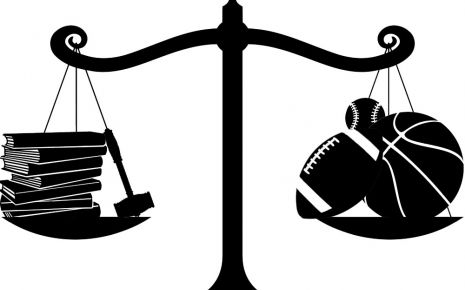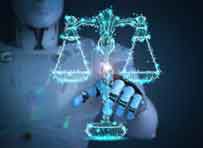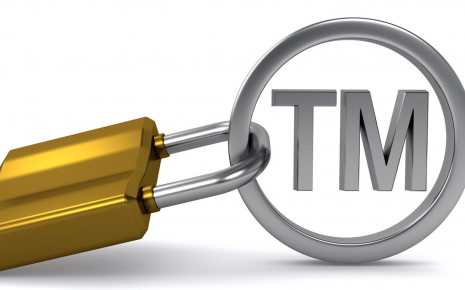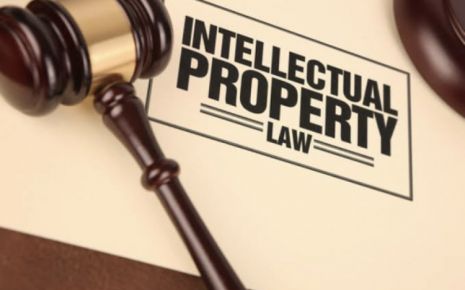Copyright Laws Regulating The Entertainment Industry: A Comparative Analysis Of US & India
In this utterly competitive world where everyone is trying to win a rat race it
is imperative to protect one's original creations specially in the world of
science and innovation. Copyright essentially was meant to protect the creations
of people from being exploited by others without permission. It acts as a shield
on both intangible and tangible property. Copyrights are the master of the world
of Intellectual property rights which encompass trademarks, patents, layouts.
But now in this ever-changing world, copyright has entered the realm of Entertainment industry also. For example, the music videos you see on You Tube, the shows you browse on Netflix, Amazon Prime, DVDs, CDs, movies and what not. Even the books you read online are governed by the copyright laws. This article will delve into what are copyrights and draw a Comparative Analysis of US & India for a better understanding of these laws and in the end provide some fruitful suggestions.
According to WIPO, "Copyright (or author's right) is a legal term used to describe the rights that creators have over their literary and artistic works. Works covered by copyright range from books, music, paintings, sculpture, and films, to computer programs, databases, advertisements, maps, and technical drawings. Copyright (or author's right) is a legal term used to describe the rights that creators have over their literary and artistic works.
Works covered by copyright range from books, music, paintings, sculpture, and films, to computer programs, databases, advertisements, maps, and technical drawings." Copyright laws depend on country to country. For example, USA has its own laws, India has its own laws and UK its own. Not only this, there are many international covenants, treaties and bodies that deal with IPR. For example, World intellectual property organization.
For instance, if Rihanna's music has to be released it will have to follow all the guidelines provided in the statue such as obtaining a license. These guidelines pertain to notifying the copyright holder about the use of the song and reporting sales and royalties accurately. A compulsory license is a mechanism that requires copyright holders to grant licenses to anyone interested in recording a particular song.
It comes into play when the copyright owner has already granted permission to someone else to record the song or if the songwriter has personally recorded and commercially released a version of the song. The fee associated with a compulsory license is determined by Congress and is periodically adjusted for inflation.
Literary works are covered by Section 2(o), while all theatrical works are covered by Section 2(h) in terms of copyright protection. Section 14 has granted a range of exclusive rights to the owner such as reproducing, adopting etc. Recently copyright amendment rules 2021 were brought which merged the copyright board with an appellate board. The IT Minister of India Mr. Vaishnaw recently stated that with the advent of AI in India many ethical concerns are being raised because of which these statutory provisions will have to be reconsidered in totality.
Whereas in India, it called fair-dealing and has been used in a narrowed way. In USA, there is a 4- factor test which acts the basis for the use of this doctrine whereas in India there is no such test. The USA laws have given the judges more freedom to decide which acts would be considered as fair-use acts. Now this paves the way for more inclusivity in today's era of technology and also the entertainment industry in general. In India, these categorizations are more societal and general to be precise.
Case laws:
Suggestions
Some suggestions for both the countries could be:
Thus, it can be fairly concluded that while India has adopted the approach of fair-dealing, USA has adopted the approach of fair-use which is a wider one. Both these countries are dealing with entertainment laws and have laid down laws that percolate to different areas of the entertainment however, it is crucial to understand that the practical application of the copyright laws is different in both these countries. Both of these doctrines are adopted and inspire from the Berne convention.
Although copyright laws in India may appear to be similar as that of USA there are some basic points of distinction between the two. Both the countries have a positional for development. In USA, for the entertainment industry one has to go through a rigorous process of obtaining licenses however it very convenient once after a license is obtained.
Citations:
But now in this ever-changing world, copyright has entered the realm of Entertainment industry also. For example, the music videos you see on You Tube, the shows you browse on Netflix, Amazon Prime, DVDs, CDs, movies and what not. Even the books you read online are governed by the copyright laws. This article will delve into what are copyrights and draw a Comparative Analysis of US & India for a better understanding of these laws and in the end provide some fruitful suggestions.
What are copyrights?
Before we get into that, it is important to understand about Intellectual property. Intellectual property deals with creations and innovations of human intelligence which a person himself makes such as artistic, literary, technical or scientific constructions and the legal rights granted to the creator of these innovations are called Intellectual Property Rights (IPR).According to WIPO, "Copyright (or author's right) is a legal term used to describe the rights that creators have over their literary and artistic works. Works covered by copyright range from books, music, paintings, sculpture, and films, to computer programs, databases, advertisements, maps, and technical drawings. Copyright (or author's right) is a legal term used to describe the rights that creators have over their literary and artistic works.
Works covered by copyright range from books, music, paintings, sculpture, and films, to computer programs, databases, advertisements, maps, and technical drawings." Copyright laws depend on country to country. For example, USA has its own laws, India has its own laws and UK its own. Not only this, there are many international covenants, treaties and bodies that deal with IPR. For example, World intellectual property organization.
Copyright laws in USA
First of all, Copyright laws in USA are governed by Copyright Act 1976 which is a federal statute. Copyright has been defined under this act as "a bundle of rights & protection given to the creator of that work in order to control if the work is created by the author of that work and has expressed it in a tangible medium." The United States copyright law provides creators within the entertainment industry with a robust legal foundation to safeguard their original works. In the world of entertainment industry, these areas are taken care of by Entertainment laws. The entertainment industry in the United States benefits from specific provisions within the country's copyright law.For instance, if Rihanna's music has to be released it will have to follow all the guidelines provided in the statue such as obtaining a license. These guidelines pertain to notifying the copyright holder about the use of the song and reporting sales and royalties accurately. A compulsory license is a mechanism that requires copyright holders to grant licenses to anyone interested in recording a particular song.
It comes into play when the copyright owner has already granted permission to someone else to record the song or if the songwriter has personally recorded and commercially released a version of the song. The fee associated with a compulsory license is determined by Congress and is periodically adjusted for inflation.
Copyright laws In India
In India, copyright laws are governed by Copyright act, 1957. Original works of literature, fine art, music, film, and computer programs are all protected by copyright laws in India. Instead of defending the ideas themselves, it defends how those views are expressed. The sole authority to modify, duplicate, publish, translate, and disseminate a work to the public belongs to the owner of a copyright. Since it was first passed in 1958, the law has undergone numerous modifications. The 2012 amendment was the most recent one. Section 2 discusses about several definitions of the work that may fall under the purview of the copyright definition.Literary works are covered by Section 2(o), while all theatrical works are covered by Section 2(h) in terms of copyright protection. Section 14 has granted a range of exclusive rights to the owner such as reproducing, adopting etc. Recently copyright amendment rules 2021 were brought which merged the copyright board with an appellate board. The IT Minister of India Mr. Vaishnaw recently stated that with the advent of AI in India many ethical concerns are being raised because of which these statutory provisions will have to be reconsidered in totality.
Comparative Analysis with India:
| BASIS | USA | INDIA |
| Copyright Duration | The USA provides more extensive copyright protection compared to India. Copyright generally lasts for the author's life plus 70 years in the USA. | In India, it lasts for the author's life plus 60 years. The extended duration in the USA grants creators' lengthier exclusive rights over their works. |
| Fair Use: | Both countries recognize the concept of fair use, but the US fair use doctrine offers greater flexibility and accommodation. It allows for transformative use of copyrighted works, nurturing creativity and innovation. | In contrast, India's fair dealing
provisions are narrower in scope and more limited. The legal framework of
fair dealing follows the common law. It is called fair-dealing in India. |
| Digital Rights Management: | The USA has implemented comprehensive laws and regulations concerning digital rights management (DRM) technologies to protect copyrighted content in the digital realm. | India is currently in the process of developing and strengthening its DRM framework. |
| Law applicable | The copyright in the U.S is governed by the Copyright Act of 1976.The copyright issues in USA are governed by Copyright Act of 1976. | The copyright issues in India are governed by Indian Copyright Act of 1957. |
| Definition of copyright | The US Copyright Office defines copyright as the set of exclusive rights granted by law to copyright owners for the protection of their work. In its definition of copyright, the US Copyright Office states that "copyright … has come to mean that body of exclusive rights granted by law to copyright owners for protection of their work." Indian law, on the other hand, supplies a statutory definition of copyright in section 14 of the Copyright Act of 1957. | In contrast, Indian law provides a statutory definition of copyright in section 14 of the Copyright Act of 1957. |
| Specification of fair use acts | US has not specified which acts would be considered as fair use. Rather it has provided a four -factor test. | In contrast, Indian provisions have articulately specified which acts would be considered as fair use acts. |
Fair-Use: The most important distinction
Whenever an unauthorized person uses someone else's creation, it is known ad copyright infringement. However, there is always an exception to a rule. One such exception is called the doctrine of Fair use which has been used both in USA and India. Fair use basically means an exemption to use the creator's creation without permission. Now in USA, this doctrine has been used heavily and is called as such.Whereas in India, it called fair-dealing and has been used in a narrowed way. In USA, there is a 4- factor test which acts the basis for the use of this doctrine whereas in India there is no such test. The USA laws have given the judges more freedom to decide which acts would be considered as fair-use acts. Now this paves the way for more inclusivity in today's era of technology and also the entertainment industry in general. In India, these categorizations are more societal and general to be precise.
Case laws:
-
R. G. Anand v. Deluxe Films [AIR (1978) SC 1613] [4]
The judgment of Supreme Court is taken into account a landmark in Indian Copyright Law.
It held, within the present case, the play and also the film revolve around an identical theme of „provincialism‟ however it's well established that a mere plan can not be the subject matter of copyright. The plot of the film portrayed two issues of provincialism that it's first of all the function of provincialism with regard to wedding and second in regard to dealings out accommodation.
Further, it conjointly proscribed the problem of evils of a society dominated by caste and therefore the ills of dower. The last two problems haven't been dealt within the play by any means. Also, the play was restricted simply to one part of provincialism that is with regard to the wedding between people from totally different states. Thus, in varied views, the story and its depiction square measure terribly totally different in regard to the one within the play. it had been not AN instance of infringement of copyright. The similarities were trivial and not a „substantial‟ or „material‟ copy of the initial play and therefore the dissimilarities weighed over the similarities.
-
R. G. Anand v. Deluxe Films [1]
This is a landmark case of copyrights. In this case there was a film which was based on a play about provincialism. Now the film dealt with more than one area of provincialism delving upon the inequalities in caste which was not touched upon by the play. Hence the court held that since the dissimilarities between the play and the film were more than the similarities, it was not a case of copyright infringement.
-
Folsom v. Marsh[2]
In this case the US Supreme court established the Four-factor test which acts the basis for the use of the doctrine of fair dealing. Justice Joseph not only laid down the test but the very notion of the use of the doctrine of fair dealing. It was held that a bona fide abridgement of original creation is not a copyright infringement. after this case, this doctrine was codified into the copyright act of USA.
-
Ashdown v. Telegraph Group
In this case the court held that publishing of extracts of a confidential diary of a political party which isn't meant to be for everyone to see in the newspaper does not get a defense of fair dealing as it was done for a commercial purpose and there was no reasonable basis of doing it.
Suggestions
Some suggestions for both the countries could be:
- Continuously adapt copyright laws to address technological advancements, ensuring effective protection of copyrighted works in the digital age.
- Encourage international cooperation and harmonization of copyright laws to facilitate cross-border protection of intellectual property. A lot of differences in the countries in respect of IPR laws can actually create problems of cross-border data transfer and lead to attribution issues also.
- Enhance public awareness and education regarding copyright laws and the significance of respecting intellectual property rights. The people in general should be informed about the copyright laws and comprehensive guidelines must be made for awareness purposes, especially in the global world where even AI is revolutionizing the entertainment industry.
- Streamline licensing processes to simplify the acquisition and management of licenses for copyrighted content by creators and users.
Thus, it can be fairly concluded that while India has adopted the approach of fair-dealing, USA has adopted the approach of fair-use which is a wider one. Both these countries are dealing with entertainment laws and have laid down laws that percolate to different areas of the entertainment however, it is crucial to understand that the practical application of the copyright laws is different in both these countries. Both of these doctrines are adopted and inspire from the Berne convention.
Although copyright laws in India may appear to be similar as that of USA there are some basic points of distinction between the two. Both the countries have a positional for development. In USA, for the entertainment industry one has to go through a rigorous process of obtaining licenses however it very convenient once after a license is obtained.
Citations:
- AIR (1978) SC 1613
- Folsom v. Marsh 9 F. Cas. 342, 1841 U.S. App. LEXIS
- https://www.drishtiias.com/daily-updates/daily-news-analysis/copyright-act-195720themselves
- https://blog.ipleaders.in/key-differences-us-indian-copyright-laws/
- https://copyrightalliance.org/copyright-law/copyright-act/
- https://blog.ipleaders.in/ipr-description/
- https://www.legalserviceindia.com/article/l195-Copyright-Law-in-India.html
- https://www.bitlaw.com/copyright/index.html
Law Article in India
Legal Question & Answers
Lawyers in India - Search By City
LawArticles
How To File For Mutual Divorce In Delhi

How To File For Mutual Divorce In Delhi Mutual Consent Divorce is the Simplest Way to Obtain a D...
Increased Age For Girls Marriage

It is hoped that the Prohibition of Child Marriage (Amendment) Bill, 2021, which intends to inc...
Facade of Social Media

One may very easily get absorbed in the lives of others as one scrolls through a Facebook news ...
Section 482 CrPc - Quashing Of FIR: Guid...

The Inherent power under Section 482 in The Code Of Criminal Procedure, 1973 (37th Chapter of t...
The Uniform Civil Code (UCC) in India: A...

The Uniform Civil Code (UCC) is a concept that proposes the unification of personal laws across...
Role Of Artificial Intelligence In Legal...

Artificial intelligence (AI) is revolutionizing various sectors of the economy, and the legal i...








Please Drop Your Comments